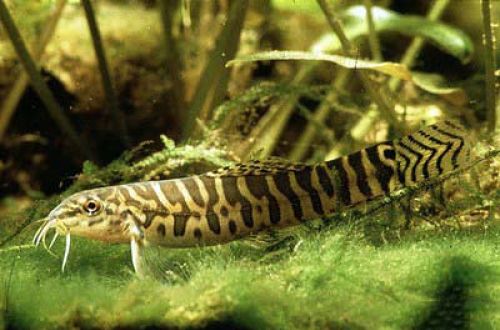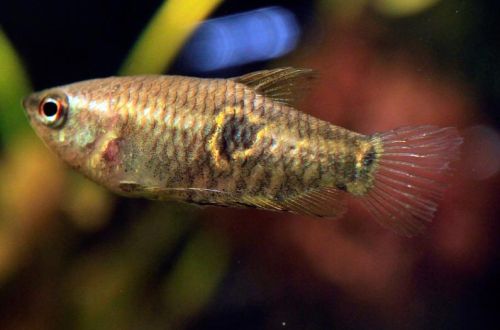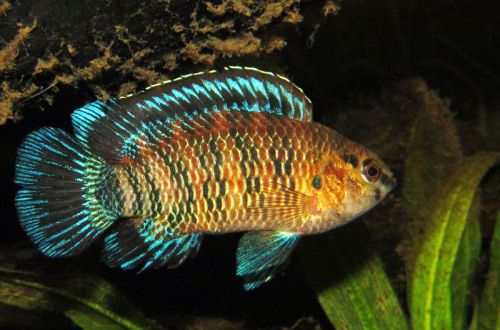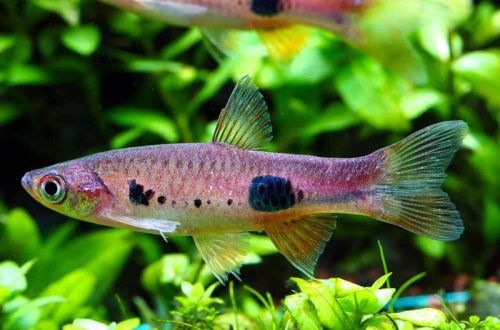
Espesye sa tanom nga bulak ang Acanthocobis urophthalmus
Acanthocobis urophthalmus, scientific name Acanthocobitis urophthalmus, belongs to the family Nemacheilidae (Loaches). The fish is native to Southeast Asia. Endemic to the island of Sri Lanka. Inhabits shallow-water river systems with fast, sometimes turbulent currents.

Description
Adult individuals reach a length of about 4 cm. The body is elongated, elongated with short fins. The ventral and pectoral fins serve more for “standing” and moving along the bottom than for swimming. Near the mouth are sensitive antennae-antennae
The coloration is combined and consists of alternating dark and light yellowish stripes resembling a tiger pattern.
Kinaiya ug Pagkaangay
Intraspecific relationships are built on competition for territory. Akantokobis urophthalmus, although it needs the company of its relatives, prefers to stay apart, occupying a small area at the bottom for itself. If there is not enough space, then skirmishes are possible.
Peacefully tuned in relation to other species. Compatible with most fish of comparable size. Good neighbors will be species that live in the water column or near the surface.
Mubo nga impormasyon:
- Ang gidaghanon sa aquarium - gikan sa 50 ka litro.
- Temperatura – 22-28°C
- Bili pH - 6.0-7.0
- Katig-a sa tubig – humok (2-10 dGH)
- Substrate type – any, except for a pile of large stones
- Paglamdag - bisan unsa
- Brackish nga tubig - dili
- Ang paglihok sa tubig - kahayag o kasarangan
- Ang gidak-on sa isda mga 4 cm.
- Pagkaon - bisan unsang pagkaunlod nga pagkaon
- Temperament - kondisyon nga malinawon
- Pagtipig sa usa ka grupo sa 3-4 nga mga indibidwal
Pagmentinar ug pag-atiman, kahikayan sa aquarium
The optimal size of the aquarium for a group of 3-4 individuals starts from 50 liters. In the design, the main attention should be paid to the lower tier. Fish love to dig in the ground, so it is advisable to use sand, a layer of small pebbles, aquarium soil, etc. as a substrate.
At the bottom, several shelters should be provided according to the number of fish. For example, isolated driftwood, coconut shells, clusters of rooted plants, and other natural or artificial design elements.
An internal flow is recommended. As a rule, the placement of a separate pump is not required. An internal or external filtration system successfully copes not only with water purification, but also ensures sufficient circulation (movement).
Acanthocobis urophthalmus prefer soft, slightly acidic water. For long-term maintenance, it is important to keep the hydrochemical values within the acceptable range and avoid sudden fluctuations in pH and dGH.
Food
In nature, they feed on small invertebrates and detritus. The home aquarium will accept most of the popular sinking foods of a suitable size (flakes, pellets, etc.).





